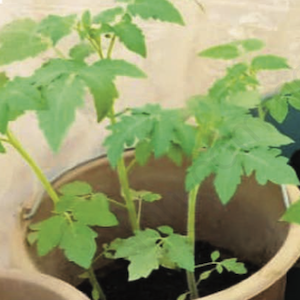Screening of widely used accessions of tomato for resistance/tolerance to the Pepper yellow vein Mali virus in the central region of Burkina Faso

HTML: 120
All claims expressed in this article are solely those of the authors and do not necessarily represent those of their affiliated organizations, or those of the publisher, the editors and the reviewers. Any product that may be evaluated in this article or claim that may be made by its manufacturer is not guaranteed or endorsed by the publisher.
Tomatoes are a widely consumed fruit, important economically and in terms of food security. Despite this importance, tomato crops are confronted with constraints, including begomoviruses, such as the Pepper yellow vein Mali virus (PepYVMLV). Responsible for leaf deformation and yellowing in cultivated Solanaceae, it is the most virulent begomovirus infecting tomatoes in Burkina Faso. The use of resistant/tolerant accessions would be of great help in finding suitable solutions. This study aims to contribute to the appropriate and effective management of tomato diseases due to PepYVMLV. To achieve this objective, an inventory of tomato accessions sold and produced in the central region of Burkina Faso and a screening of the preferred accessions of tomatoes in semi-control conditions were conducted. Our results showed that sixteen varieties are sold in shops, with Mongal F1, Emerald F1, and Cobra 26 F1 reported to be the most preferred by farmers. Monitoring of the tomato plants inoculated using whitefly-mediated transmission during 32 days showed that Diva F1, a newly introduced accession, was the least susceptible to PepYVMLV, followed by Emerald F1, Cobra 26 F1, and Mongal F1, with yield losses ranging from 25.38 to 359.9 g/plant. Our results suggest that even if the productivity of Diva F1 seems to be slightly impacted by the virus, it is unsuitable for farmers because of its lower yield.
How to Cite

This work is licensed under a Creative Commons Attribution-NonCommercial 4.0 International License.
PAGEPress has chosen to apply the Creative Commons Attribution NonCommercial 4.0 International License (CC BY-NC 4.0) to all manuscripts to be published.

 https://doi.org/10.4081/ija.2023.2202
https://doi.org/10.4081/ija.2023.2202



